How to Make a Cool and Compact Fire Pit From Half a Sheet of Steel
Intro: How to Make a Cool and Compact Fire Pit From Half a Sheet of Steel
Hello Instructablers.
I'm really taken with fire pits at the moment. I think it's because fires are such a natural social thing for humans. They have been at the centre of our social lives for tens of thousands of years. There are sites in Northern Australia where the remnants of camp fires show continuous use of more than 40,000 years - art on the adjacent rocks depicting long-extinct megafauna and Europeans on horseback. I think we all have a genetic memory of socialising in this way, and that's why we all feel so comfortable doing it.
I would like everyone to be able to enjoy a fire, but my last fire pit was a bit too big for a lot of back yards so I have come up with this new - more compact - design.
STEP 1: What You Will Need
This one is made from half a standard sheet of 2.1mm chequer plate. Any steel plate of about that thickness will do. The overall dimensions of the sheet you need for this design are 1200mm x 1200mm. Of course you can adjust the design to suit the materials you have at hand. There is no need for a separate stand for this fire pit. It is all one piece.
Here's a guide to what you'll need:
- 1200mm x 1200mm 2.1mm chequer plate
- Tape measure
- Boilermakers'chalk and a straight-edge.
- A welder. I'm lucky enough to have a great old mig.
- An angle grinder or two with cutting discs, flap disc, grinding disc, and wire brush.
- A hammer
- A drill for cutting drain holes.
- "Pot Belly Black" paint. Or any heat resistant paint. Or no paint at all for the rusty rustic look.
- Safety gear: gloves, ear muffs, eye protection, etc. Boring but necessary.
STEP 2: Getting Started
I wanted to make a more compact fire pit that would be suitable for smaller yards. I had an idea that I could make a self supporting fire pit from a single sheet of steel, but I couldn't really picture how it would turn out. The simple solution was to make some simple models from graph paper and compare the results.
Of course you can use the same technique to make your own design. If you do please post a picture in the comments.
You can see from the pictures that I chose model III and then it was a very simple process to transfer the dimensions from the graph paper to the steel plate. The heavy lines in my sketch are cuts, and the light ones are folds. Mark all these on the smooth side of the steel plate as shown.
STEP 3: Cutting Out
This step is really simple - but noisy.
Use a cutting disc on your angle grinder to cut the four "V"s out of the corners.
Where the fold marks are, use your cutting disc to score the steel to assist with the folding process. I used a bit of railway rail as a fence for this, but freehand would be fine. I recommend making these score marks quite deep (perhaps to about half the thickness of the material), especially if you haven't got a assistant to help with bending. It will make the folds look much neater and it will be much easier.
With your flap disc or grinding disc prepare the edges of the "V"s at the corners for welding. If you don't do it now you might be sorry later.
STEP 4: Bending 1.
This proved to be the trickiest part for me. But for you it will be easy. The secret is to make the score marks deep. Do that, and bending will be neat and easy. The finished product will still be structurally fine providing you don't cut all the way through. I had a hard time at this - next time I will know better.
First; with the smooth side up, bend the outer most pieces up. Don't try to get them to their final position just yet.
Then bend the inner folds the other way. Try to get the seams to meet at the folded corner.
I started on the bench, but ended up on the ground using my weight to hold it all down while I strained to bend the steel. If you have trouble at this point, get out the grinder and make the score marks deeper.
STEP 5: Welding 1.
First position the folded corners so the line up nicely and the just tack each one.
I found that the steel just did not want to stay where I wanted it to, and having only two arms and no beautiful assistant I had to use some ropes. See the picture. This worked fine.
When all four corners are tacked, get out your hammer, turn the steel over and lay into it until all the seems meet nicely. This is another noisy job, but your neighbours are understanding people.
Now that the seams meet, flip the job over again and weld the seams. Try to make your welds neater than mine - shouldn't be too much of a challenge.
STEP 6: Bending 2.
Bend the outer part so they join at the corners.
My beautiful assistant was living it up with the Girls at Surfer Paradise today so I had to create something much less beautiful (something like a cant hook) to help with the bending. As I mentioned before, with deeper score marks I probably wouldn't have needed assistant or tool.
Try to get the corners to meet approximately perfectly.
STEP 7: Welding 2.
When the corners are meeting politely, tack each one.
Again, get out your hammer and punish those seams until they meet.
When the seams look good, weld them on the inside.
I flipped mine over at this point and ran a small bead of weld along the outside of the seam as well just to make it look neater.
STEP 8: Finishing
Now your fire pit is complete and awesome, but a few more small tasks will make it even better...
- If you weld like me you will need to grind those welds until they look vaguely professional - this can take a while.
- Drill some holes to let water drain if it's left in the rain. I put one in each corner and one in the centre.
- Give the whole thing a thorough going over with a wire brush disc on the angle grinder. Try to knock off any old rust or mill scale.
- Give it a coat of heat resistant paint. I found some "Pot Belly Black" in a spray can that works very well. But it's expensive.
STEP 9: Conclusion
You now have a fire pit that you can be proud of. Fill it up with wood and fire, and get some friends around (make sure one of them has a guitar and knows how to use it), and load them up with beer and food. There is nothing better that sitting around a fire with a bunch of good friends.
And don't you forget to invite me!
Please feel free to comment. I'd love to see any ideas for improvements. I am already thinking of...
- A removable barbecue grill
- A port in the side to inject air from a hair dryer or vacuum cleaner - like a forge.
- Handles. It's almost impossible to pick up off a flat surface.
If you would like to see more of my stuff, please feel free to see my Etsy shop at deBurghSTEEL.


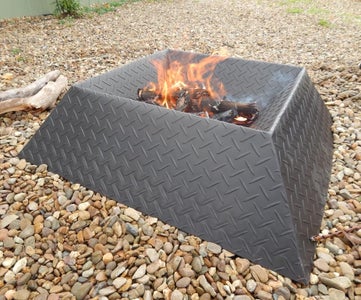
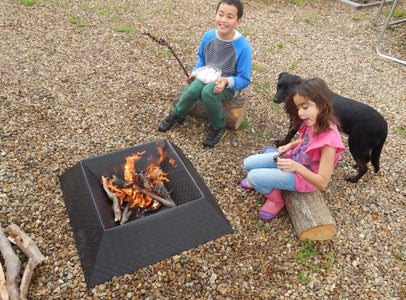
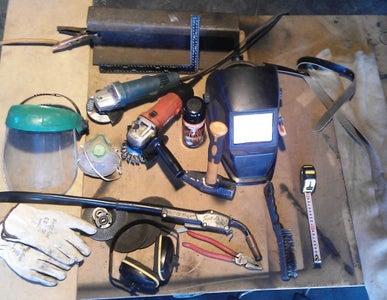
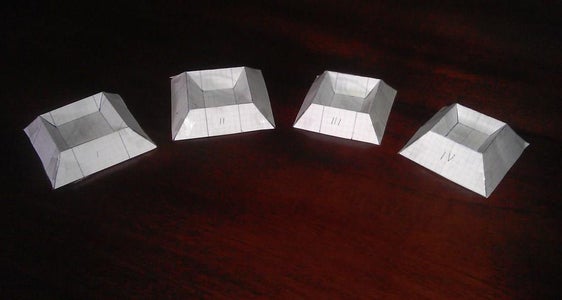
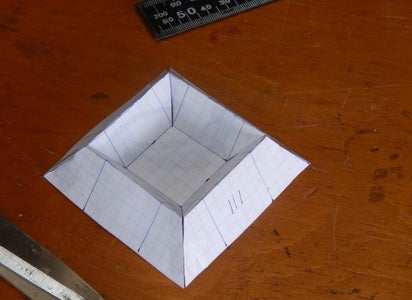
99 Comments
chancecusher 2 years ago
glutekma 4 years ago
lilyedwardswelding1 2 years ago
glutekma 2 years ago
Only three countries – the U.S., Liberia and Myanmar – still (mostly or officially) stick to the imperial system. Give the metric dimensions a try, you might like it!
lilyedwardswelding1 2 years ago
lilyedwardswelding1 2 years ago
mohanyesylvester 3 years ago
LENA-Therapy 4 years ago
amunamun972 4 years ago
jjharrell 6 years ago
glutekma 5 years ago
so0kaijay 7 years ago
Does anyone know the height and width of the finished product?
Superbender 8 years ago
Nice design I am having a fire pit on my to-do-list for a while now. I am keeping yours in mind. Thanks for posting.
morfy 9 years ago
eyouel 10 years ago
cammers 10 years ago
Thanks
michaelgc 10 years ago
really awesome, looks better than most of the ones you could buy also.
cammers 10 years ago
Thanks.
Most of the ones I've seen in the shops have been really light and flimsy. This one is pretty solid compared to them.
TrollFaceTheMan 10 years ago
I wouldn't mind one, for my backyard... If only I had the tools...
TrollFaceTheMan 10 years ago
Anyways, Nice job!!